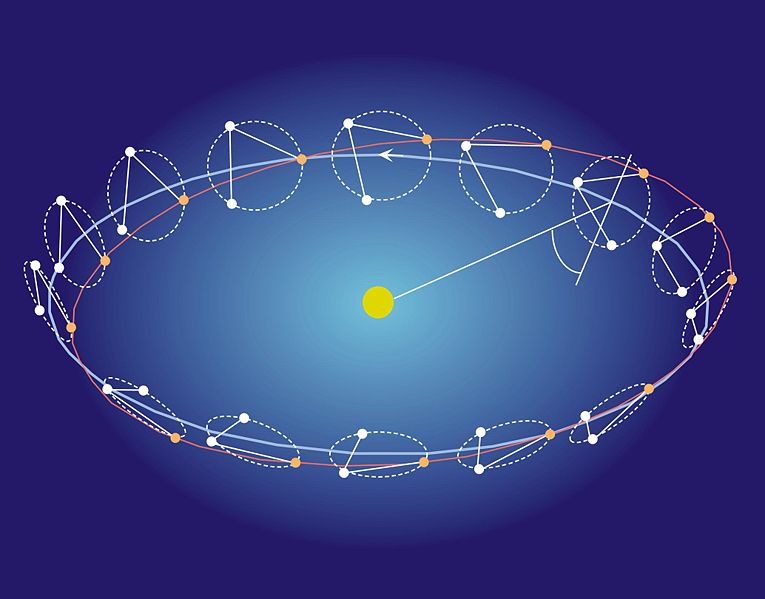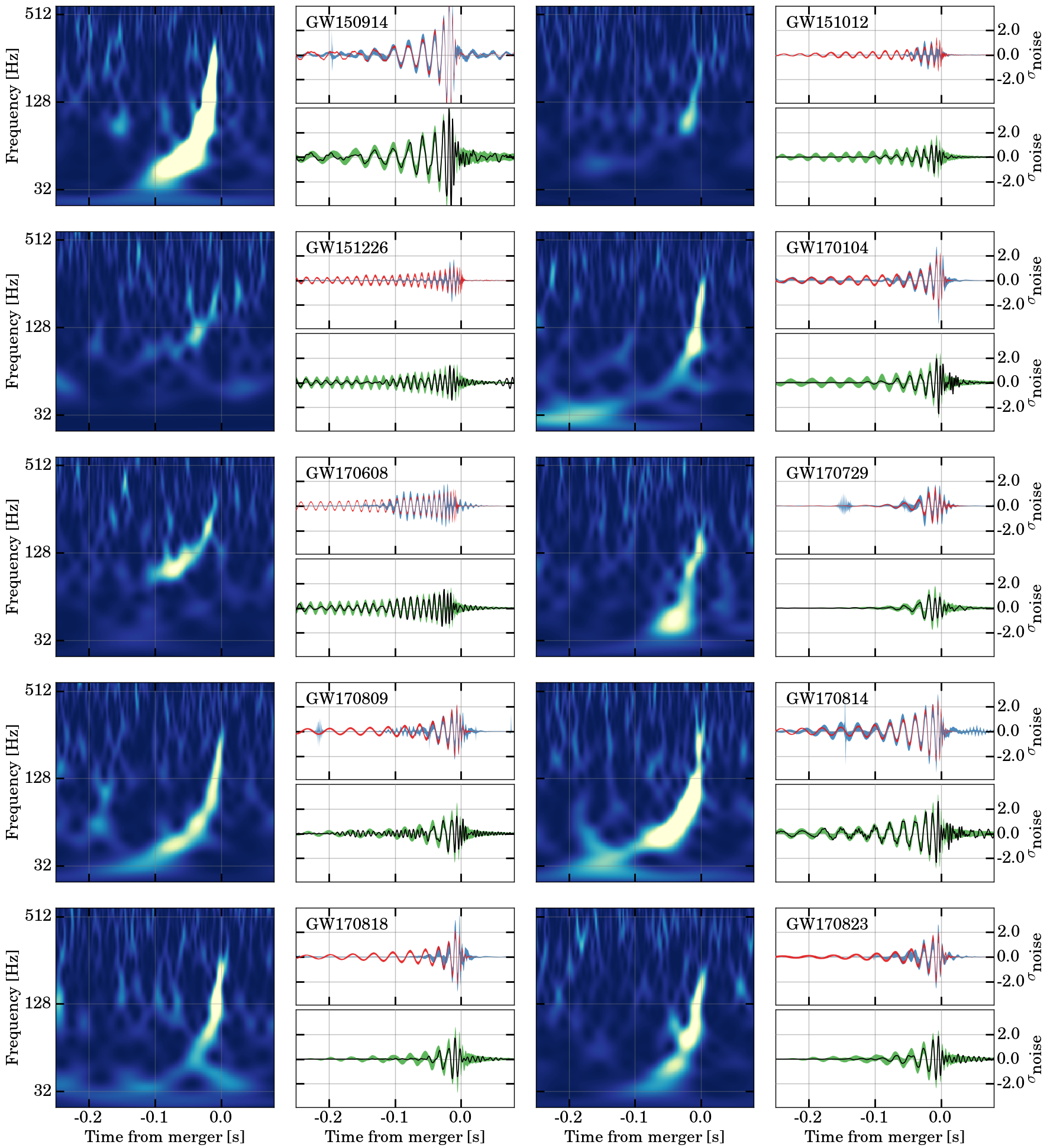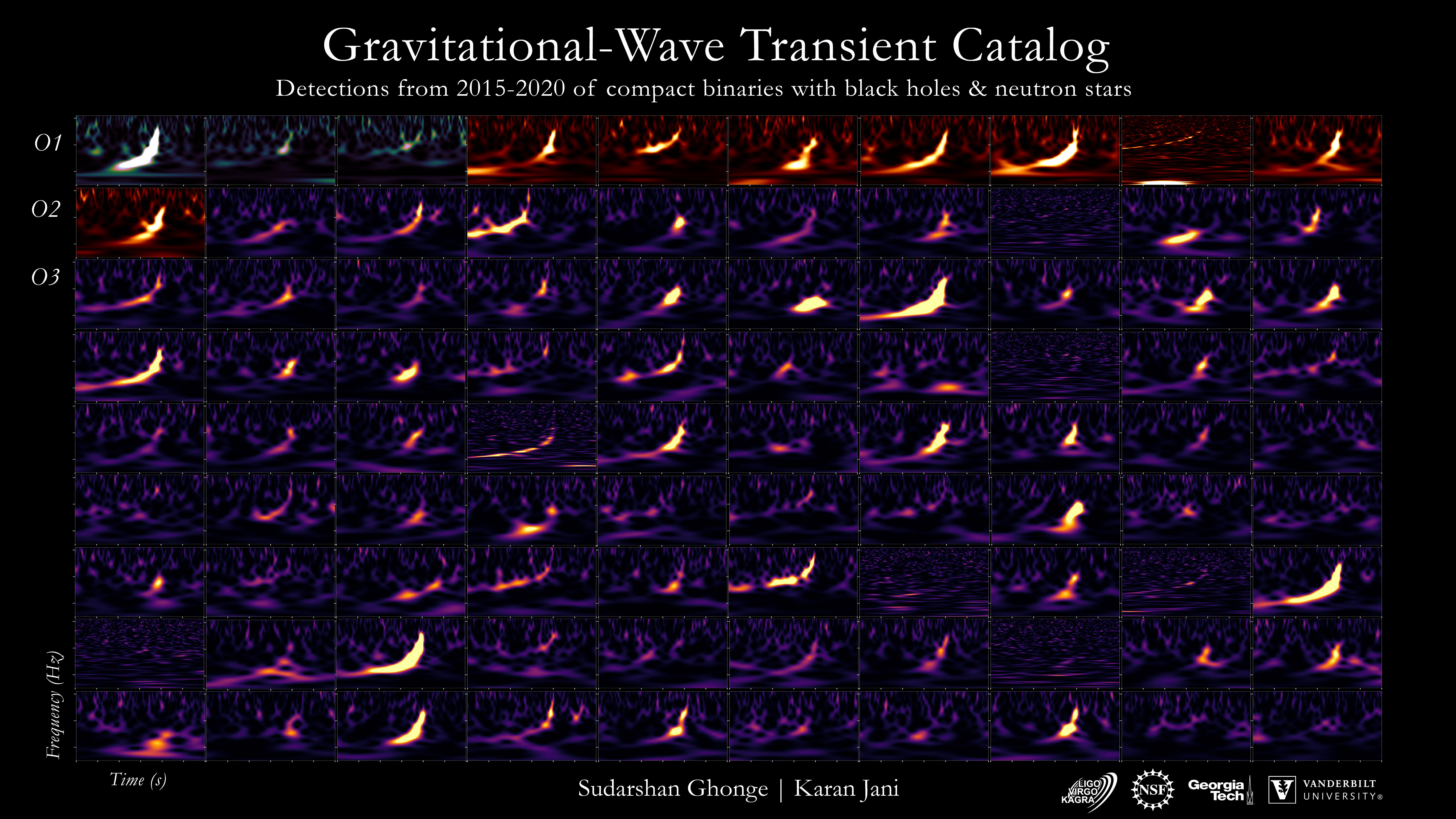The Hulse-Taylor binary pulsar
The Hulse-Taylor binary contains two neutron stars, masses 1.4414 and 1.3867 suns, in orbit around each other (Weisberg & Taylor 2005). One of the neutron stars is a pulsar of period 59 milliseconds. The pulsar provides a natural clock that enables the orbit to be measured with exquisite precision.
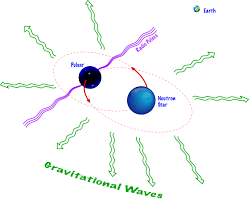
Credit: Shane Larson |

|
The first detection of gravitational waves: GW150914
GW150914 gravitational wave form
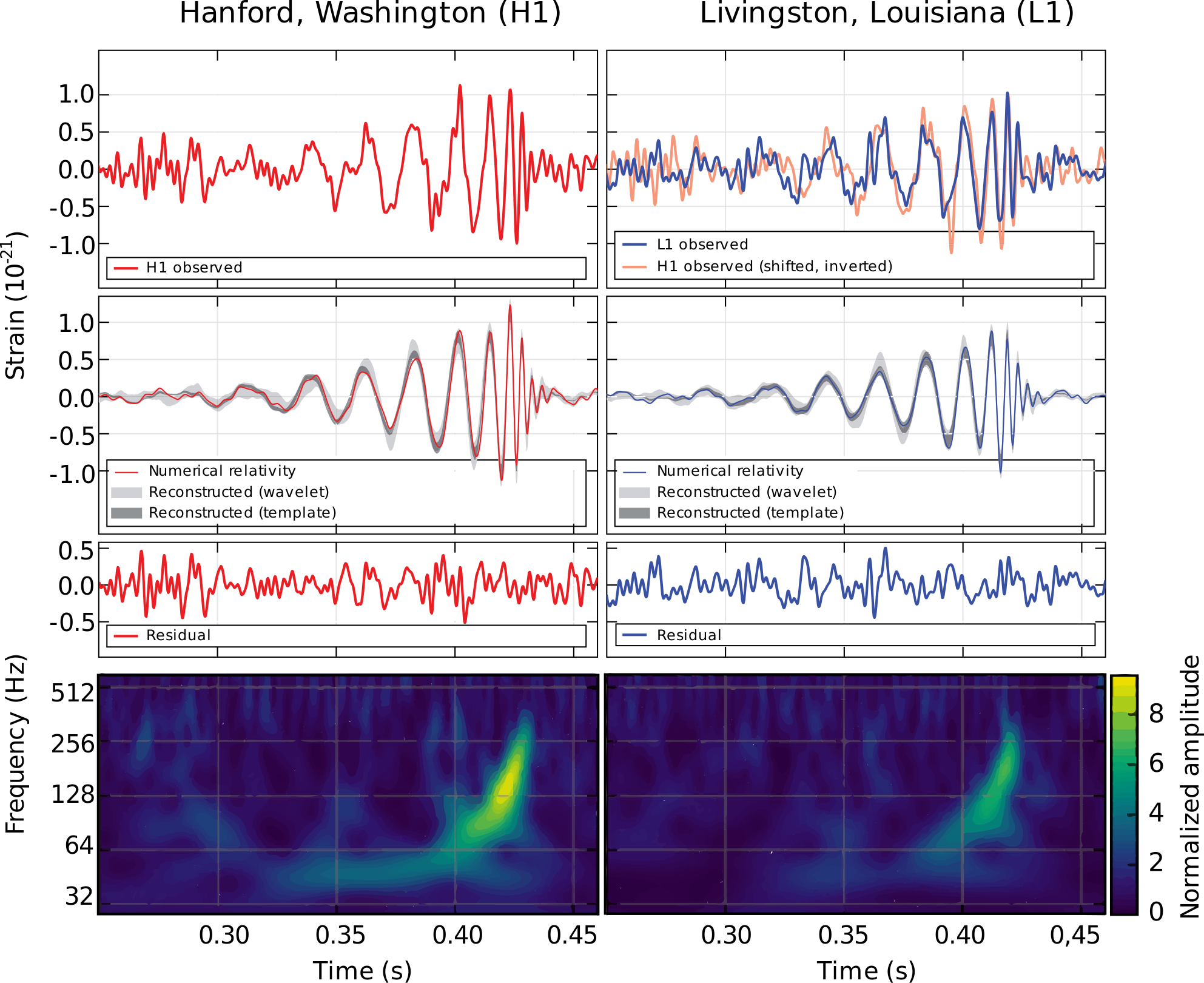
The journey of a gravitational wave
The first detection in gravitational waves of the merger of two neutron stars: GW170817
A Gamma-Ray Burst (GRB) was detected 1.8 seconds later
A glitch in the LIGO-Livingston data delayed an accurate position on the sky
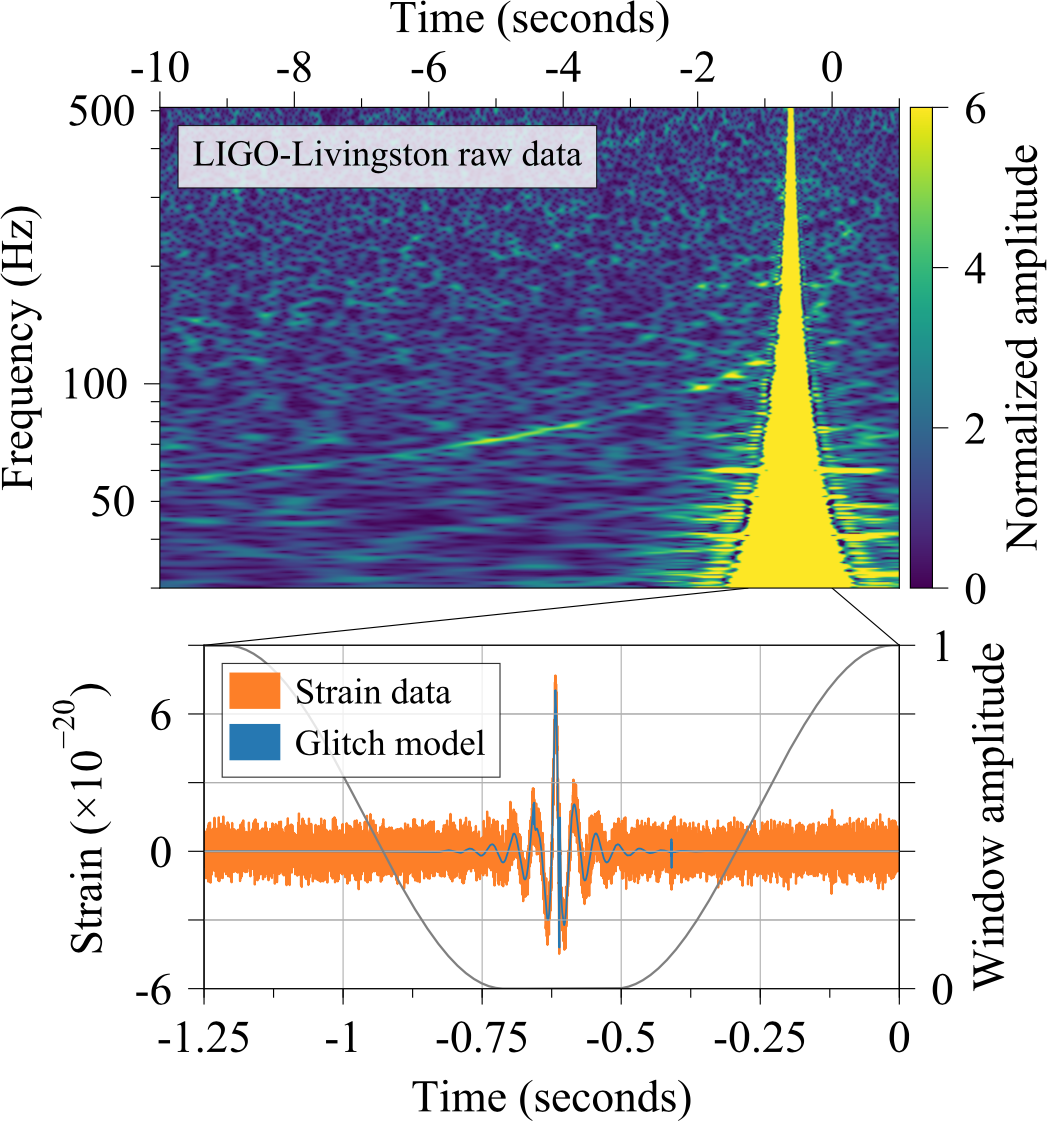
11 hours later, astronomers discover a kilonova in NGC 4993 in the error box of GW170817
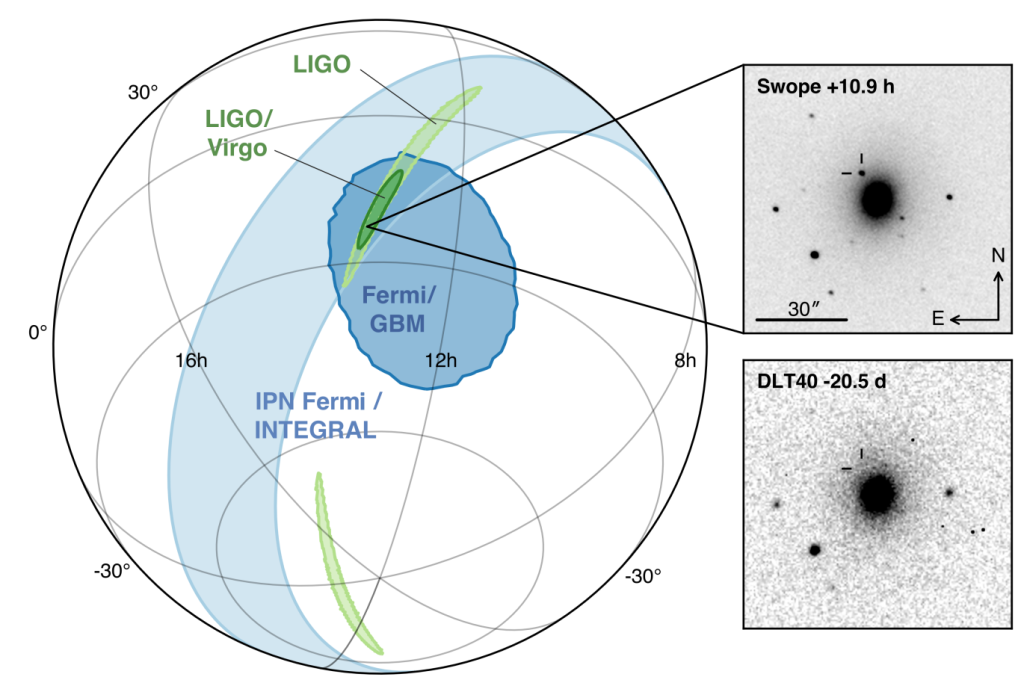
Timeline of observations of GW170817
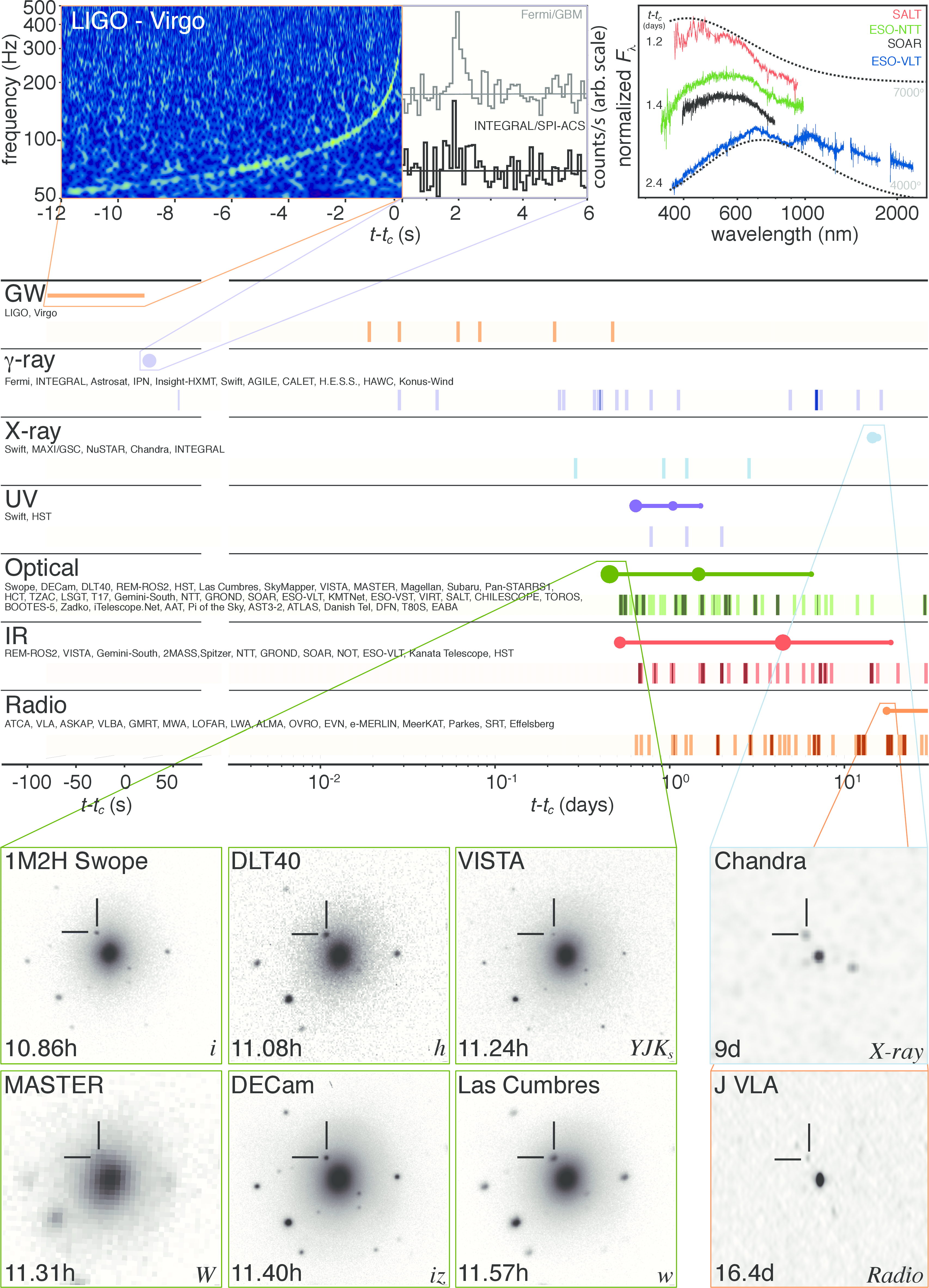
The infrared spectrum of the kilonova associated with GW170817 shows two bumps, a signature of very heavy elements.
Observation. Model.

Gravitational waveforms of the 6 high signal-to-noise mergers 2015-2017
The 10 gravitational wave merger events (9 black hole mergers, 1 neutron star merger) from the first two LIGO/Virgo observing runs 2015-2017
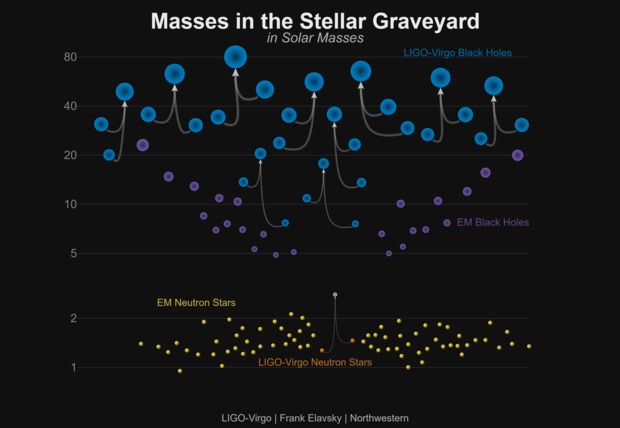
90 gravitational wave merger events from the first three LIGO/Virgo/KAGRA observing runs 2015-2020
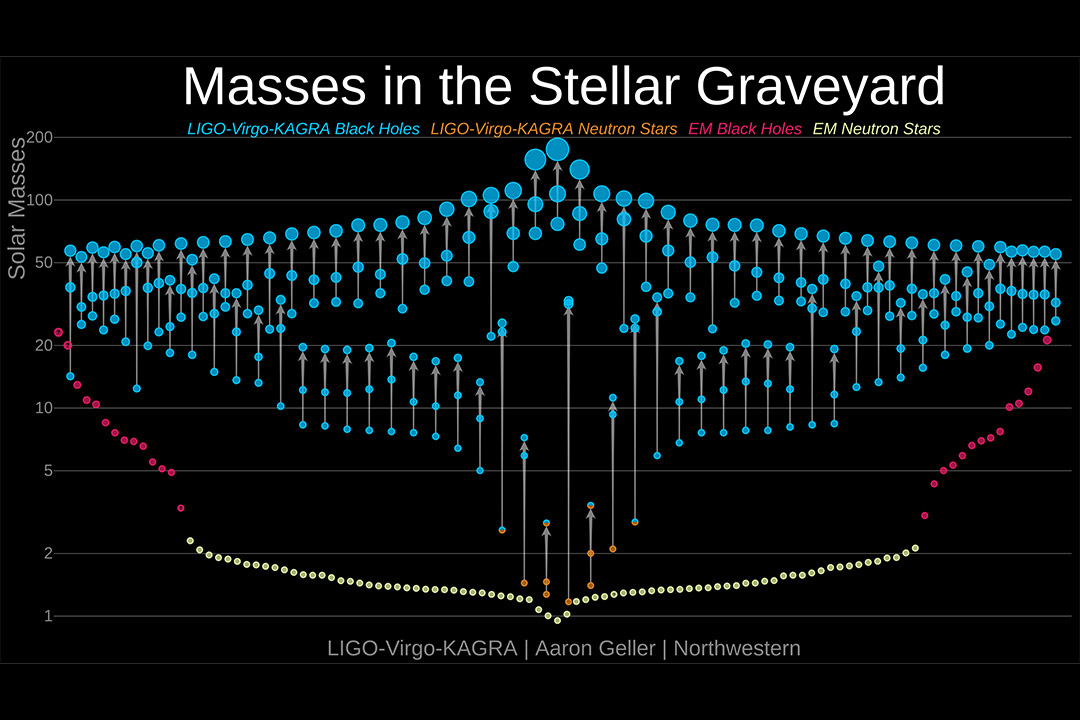
Second neutron star merger (1.6-2.5 + 1.1-1.7 → 3.5 solar masses): GW190425
Planned mission Laser Interferometer Space Antenna (LISA) to detect gravitational waves from merging supermassive black holes
